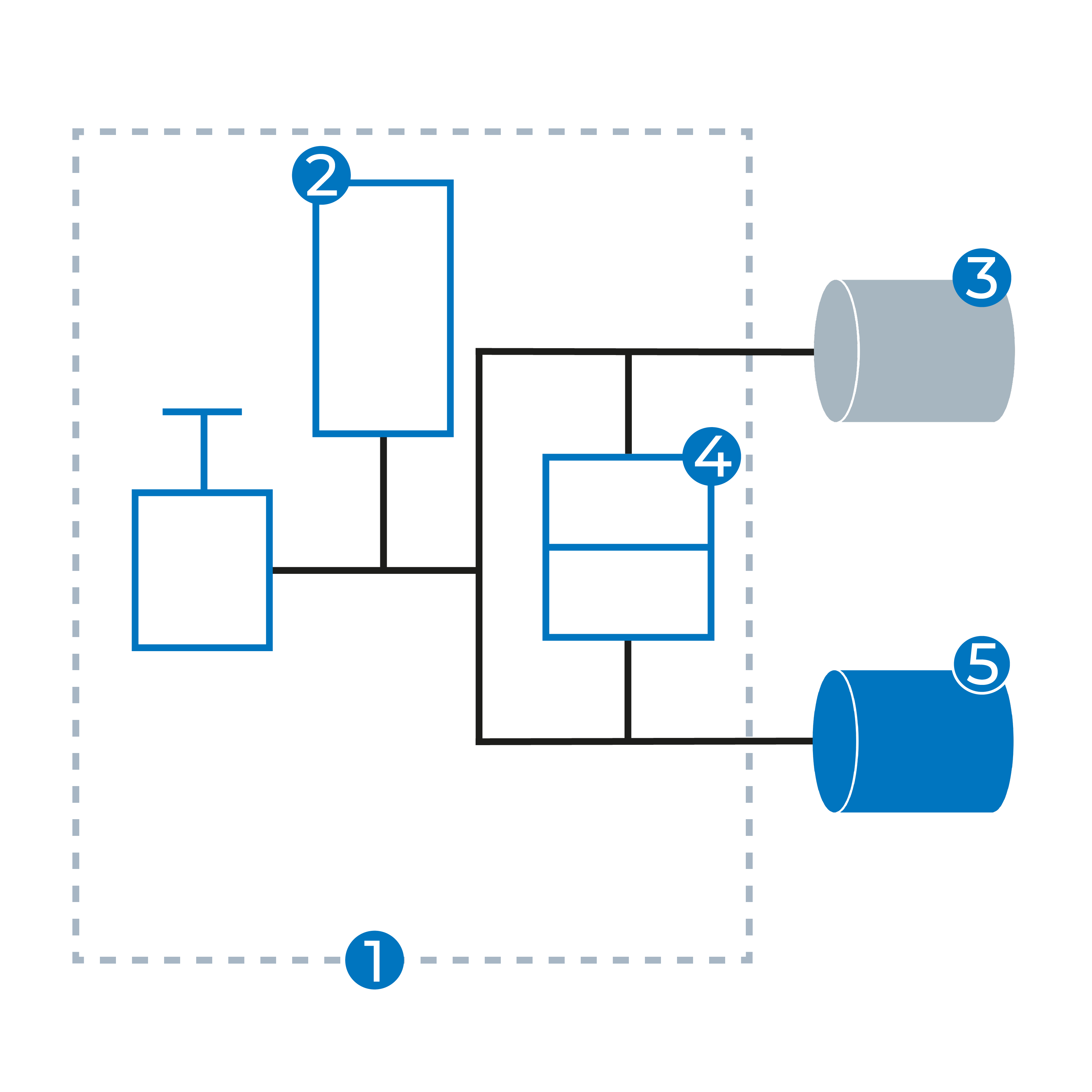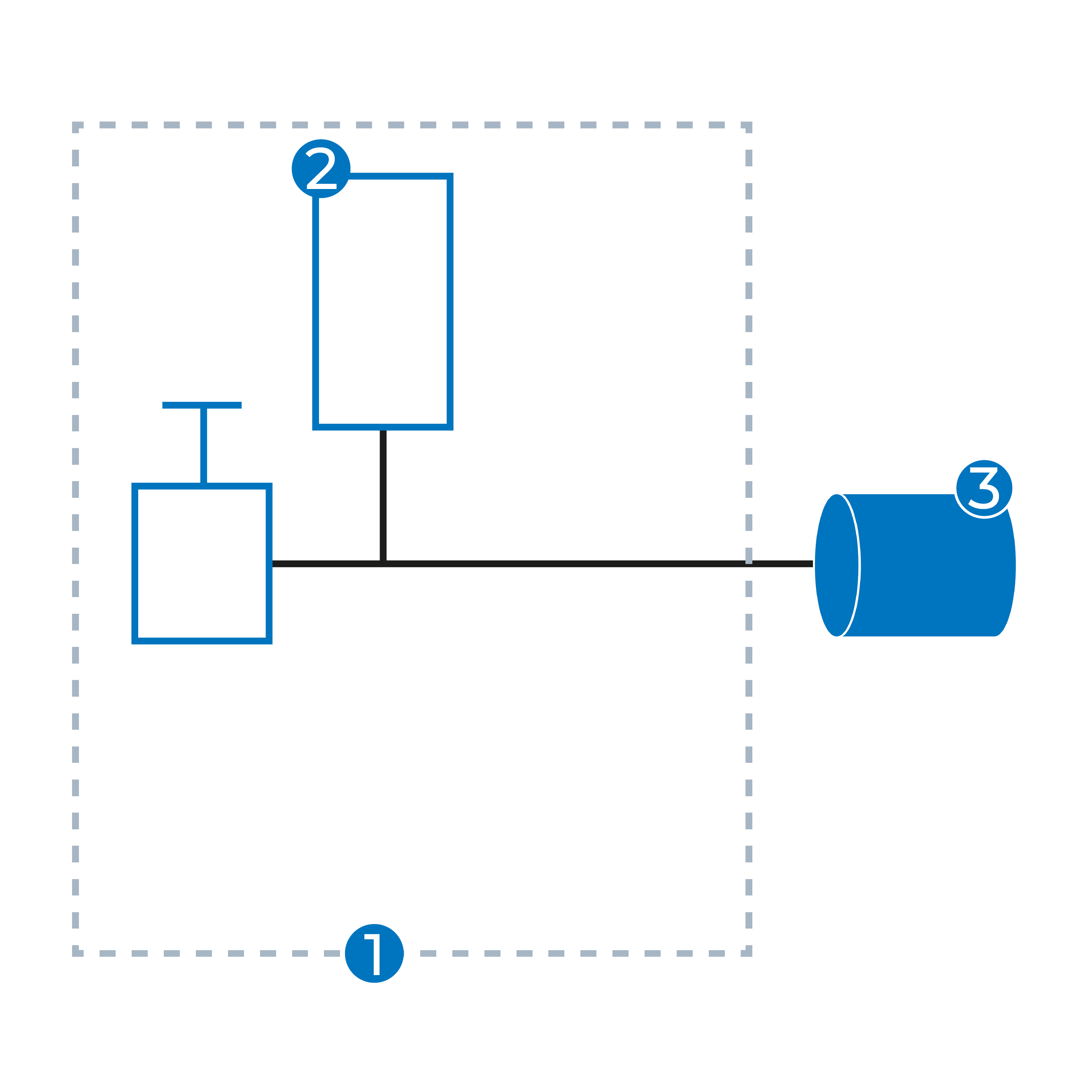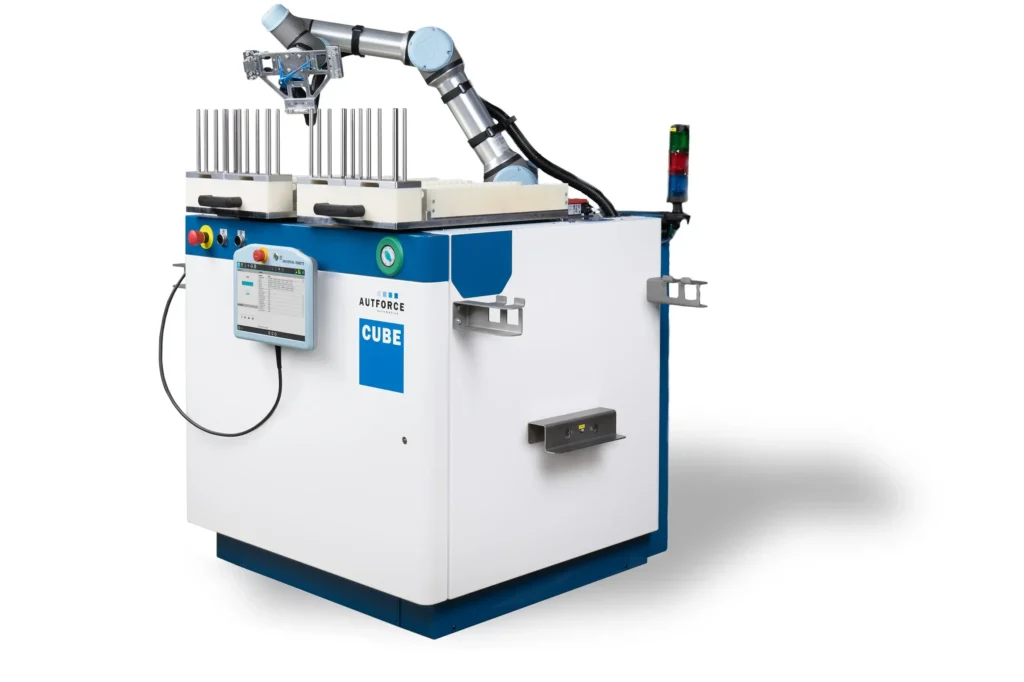Flexibility
Inline or stand-alone, with or without IO/NIO component identification. Our leak test stations are individually adapted to your requirements.
Liquids, dust, or air – component leaks usually lead to errors in downstream processes or product defects at the end customer. To avoid these scenarios and the resulting follow-up costs, it is necessary to test products for proper tightness.
With our AUTFORCE CUBES, we support you in the quality control of your components. Together with our partner ATEQ, the leading manufacturer of industrial leak testers, we combine the specialized knowledge of two industries to make your day-to-day production even more efficient. Inline or stand-alone, with manual or automatic loading – we adapt to your needs!
Go to the references
A differential pressure sensor (4) is used to determine the pressure difference between the test object (5) and the reference (3).

For this test method, the test pressure is applied to the input
of the test part (3).
The pressure drop is measured via the pressure sensor (2).

A differential pressure sensor (3) measures the pressure drop across the laminar flow element (2). The pressure of the test specimen (5) is measured by the test pressure sensor (4). The flow rate in the system can thus be calculated.
The internal tank (6) is pre-filled with the test pressure as soon as the test item (5) is connected. In case of leakage, the leakage flow passes through the calibrated flow element (2). A pressure drop occurs and is measured by a differential pressure sensor (3). The pressure of the test specimen (5) is measured by the test pressure sensor (4).
Our leak test stations can be used for a wide variety of activities:
Automated loading and unloading using a collaborative robot (cobot). Lighten the workload of your staff and increase your capacities!

No matter what the testing task, our burst, gas and leak test benches are individually tailored to the particular requirements:
The components can be inserted into the leak test station either manually or automatically. Openings to be closed are sealed and the test is performed automatically.
The components are checked for possible leaks using differential pressure measurement, relative pressure measurement, flow measurement or flow leak measurement. With unique component identification, the test results are recorded in an electronic product file for the component.
NIO parts are detected and can be rejected directly. In case of repeated occurrence of defective parts, you can react immediately and optimize upstream production (trend detection). As a result, you reduce scrap and increase your output.
In combination with our autfactory shopfloor management system, you also benefit from central control and seamless data tracking of the station. Changes in the test sequence can be made quickly and easily using the visual editor, without any programming knowledge.
Thanks to data tracing down to batch size 1, you ensure the quality standards of your production. With autfactory, we can help you gain valuable insights, identify potential, and thus increase the output of your production.
Find out more about the Shopfloor Management System <br> autfactory!AUTFORCE is a specialist in automated quality inspection. When it comes to automating manual or visual quality inspections and relieving your employees in this area, we are the right contact. Get in touch with us. Together we will find the best solution for your project!
Christian Hanbauer
Head of Sales
+43 (664) 88 71 02 50
christian.hanbauer@autforce.com